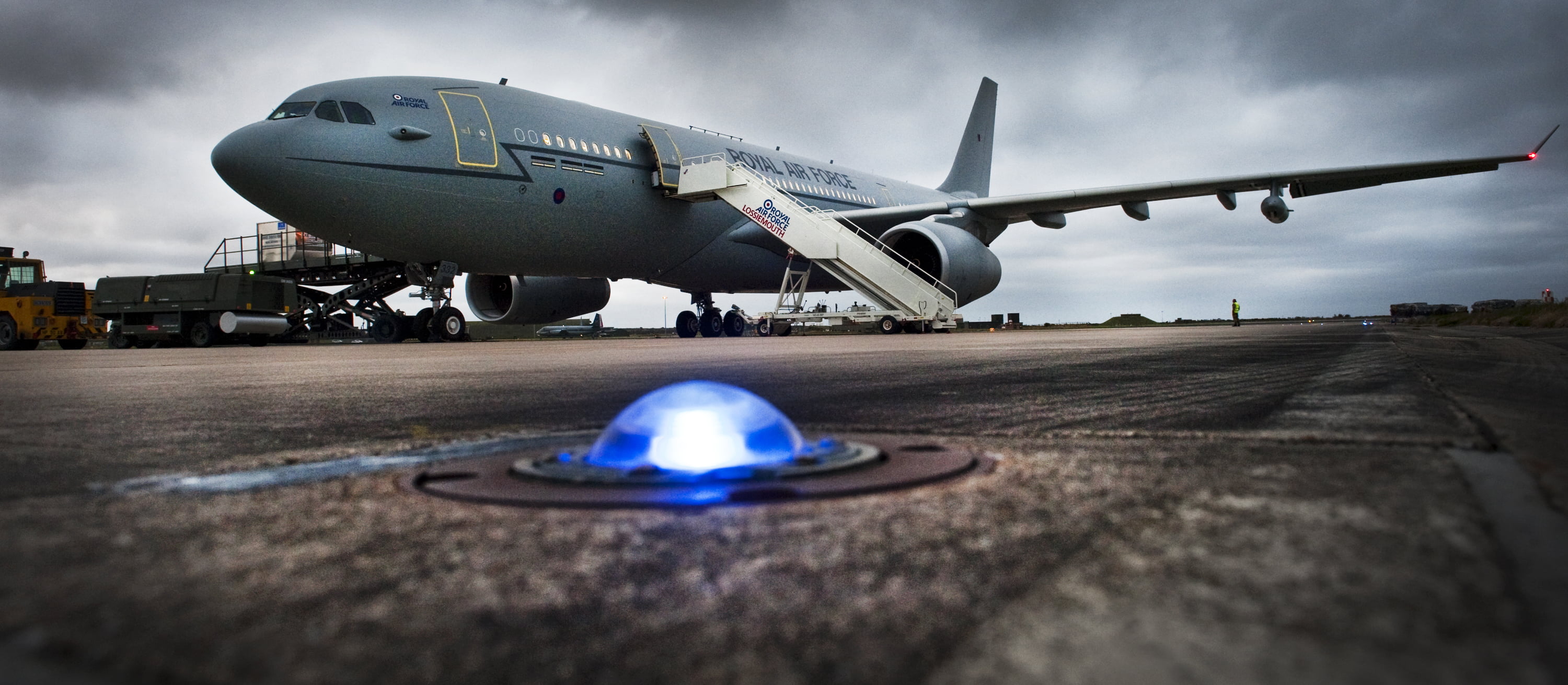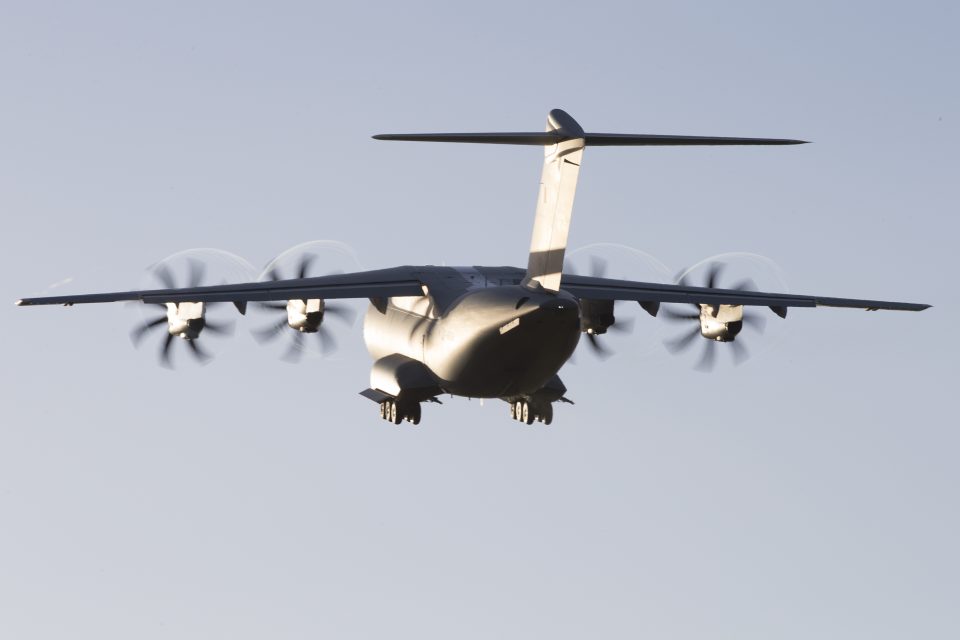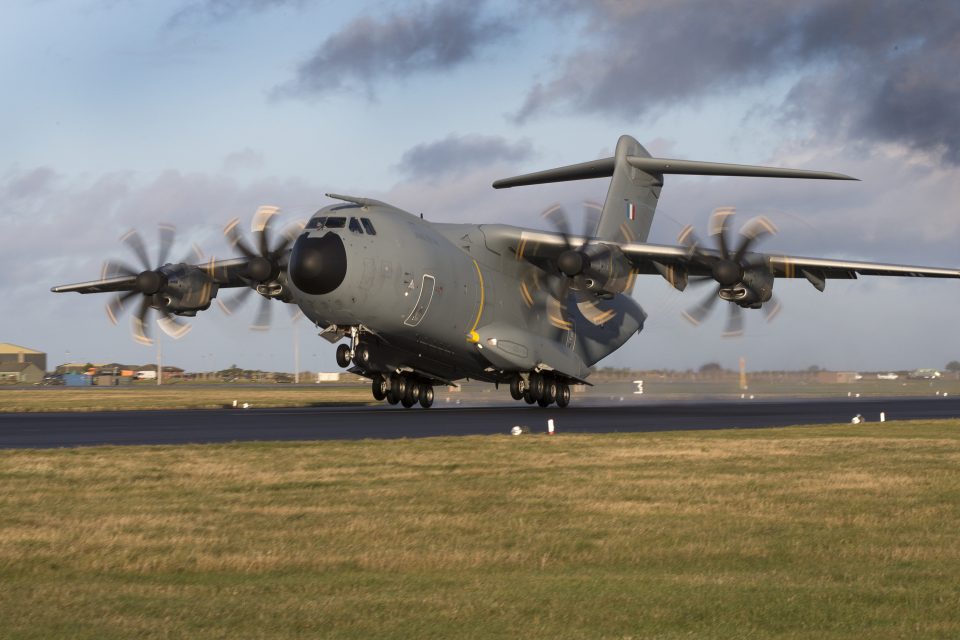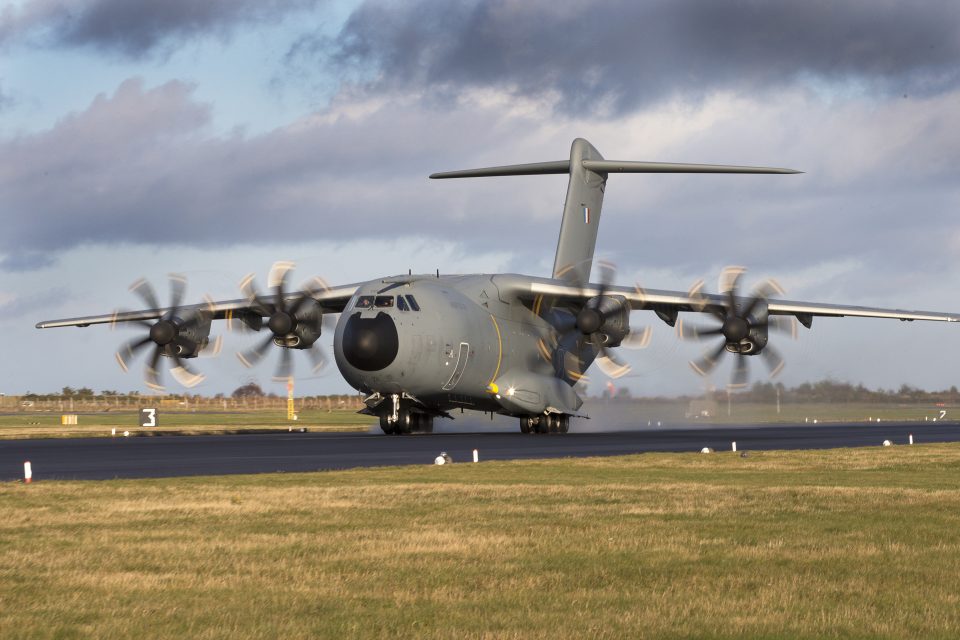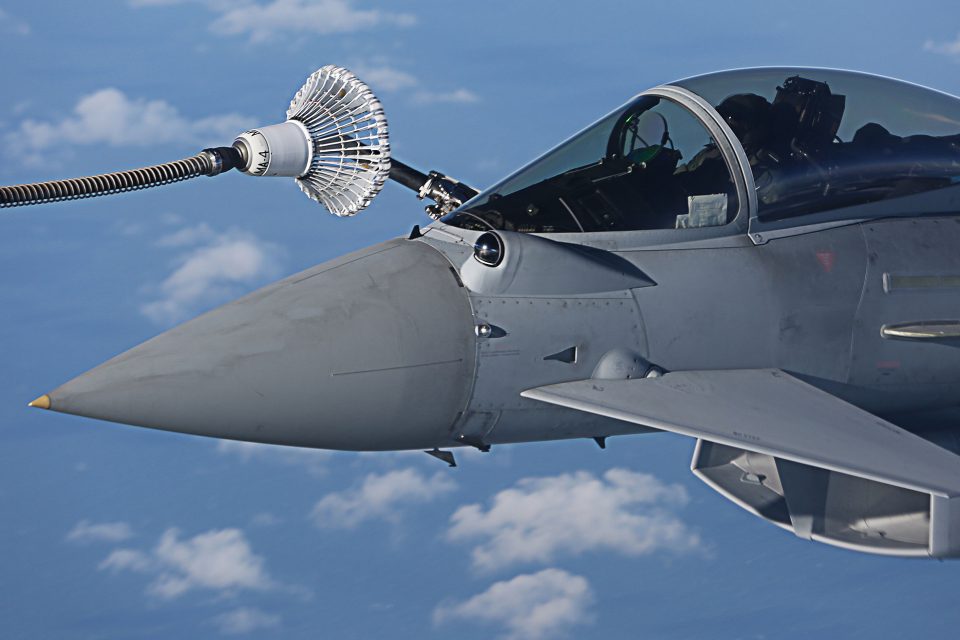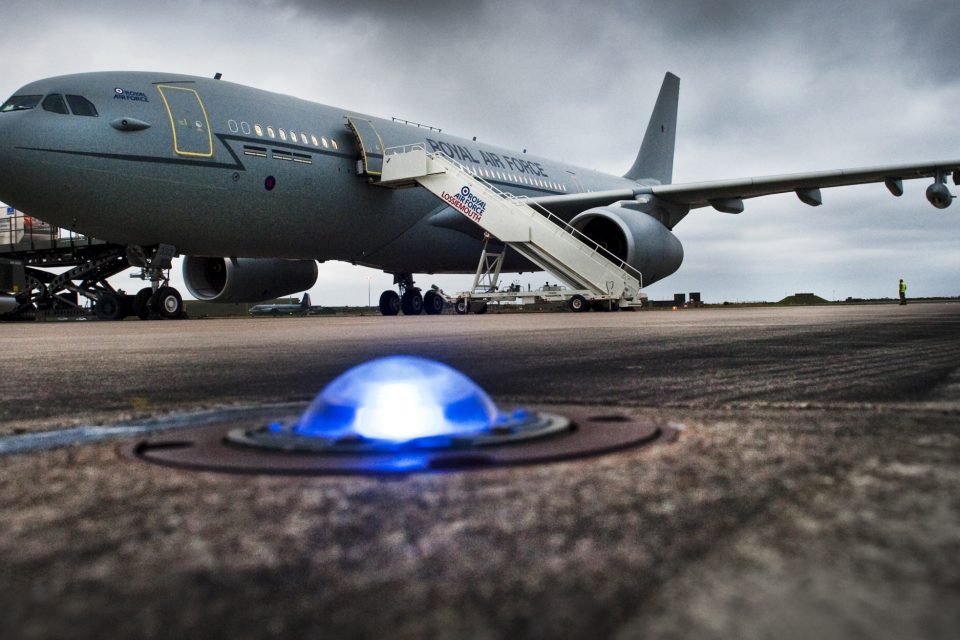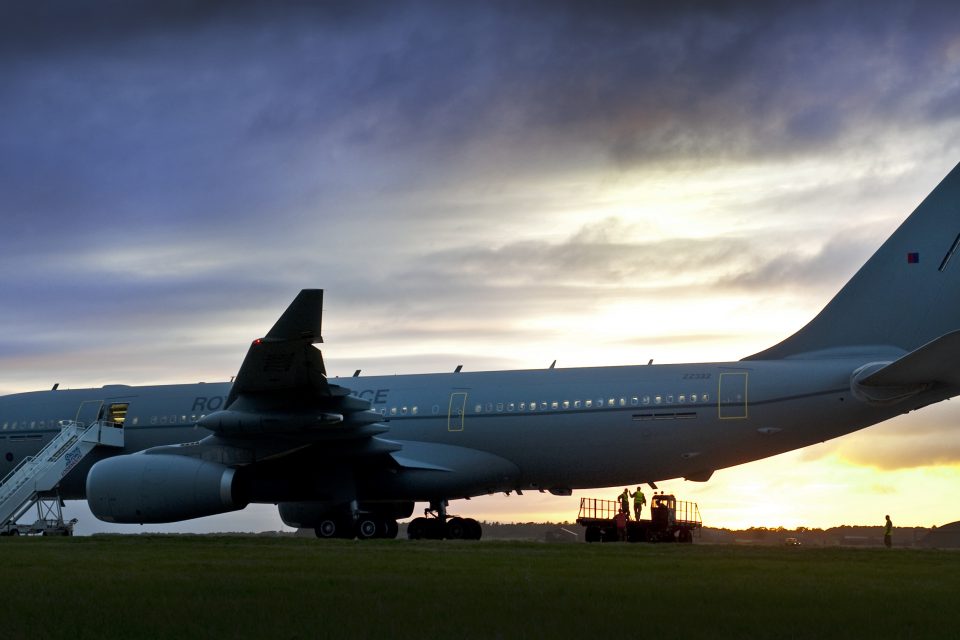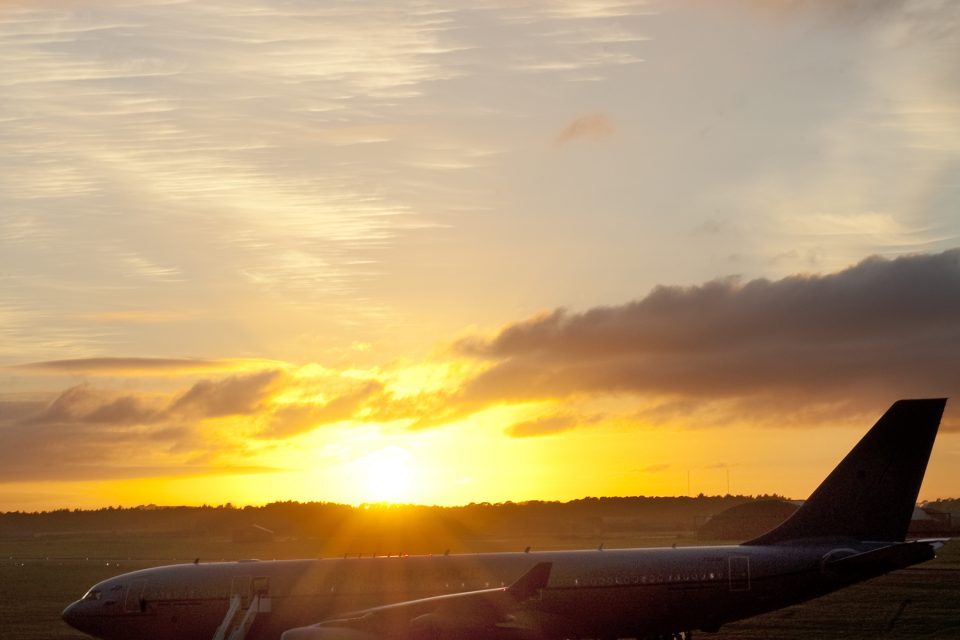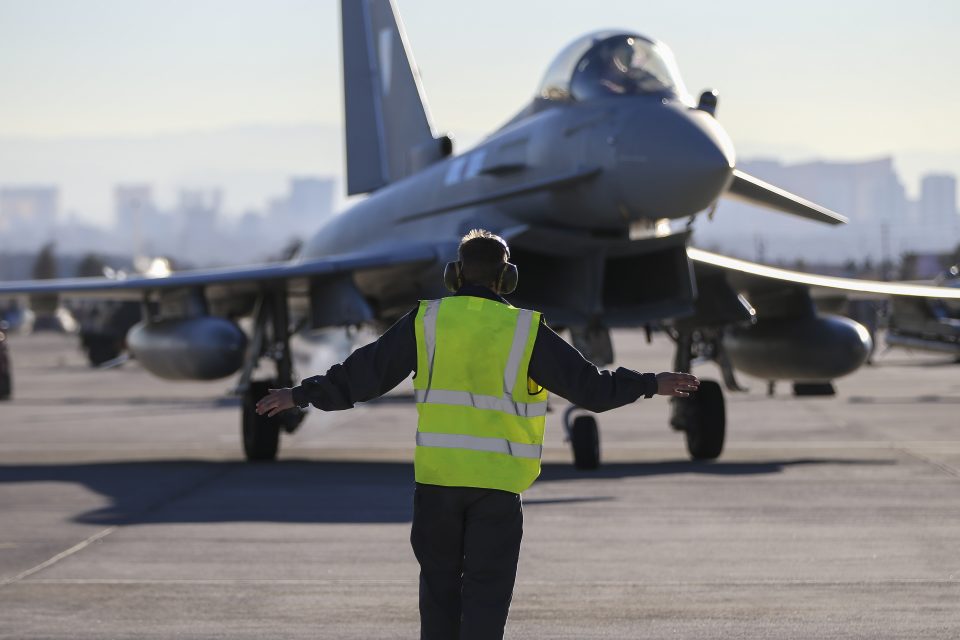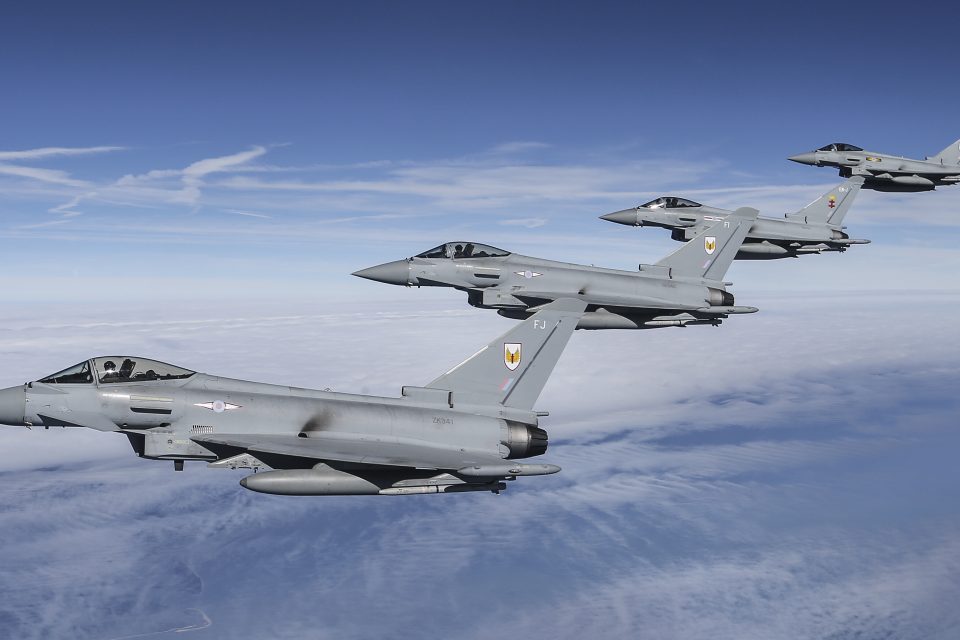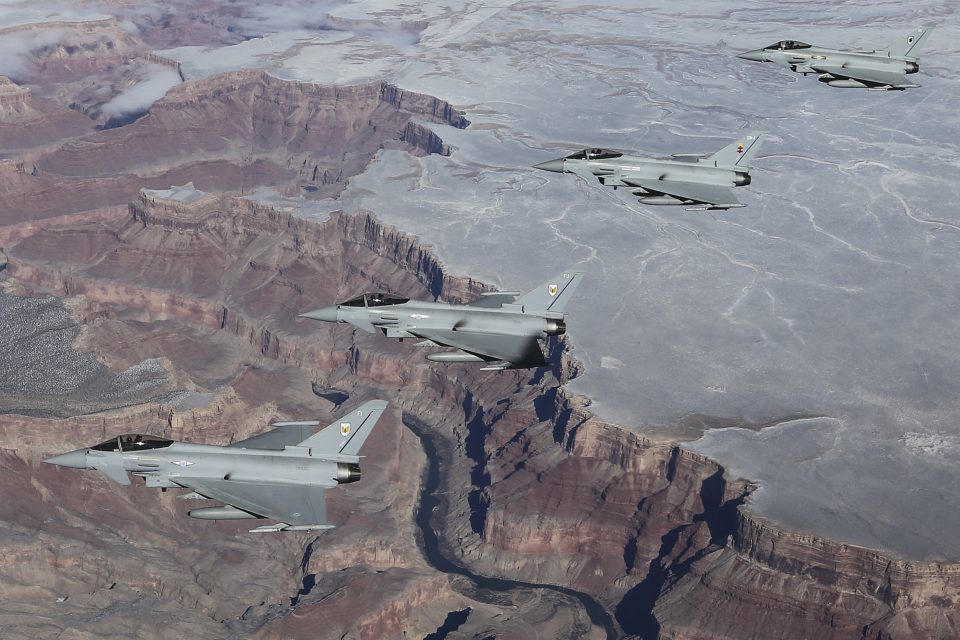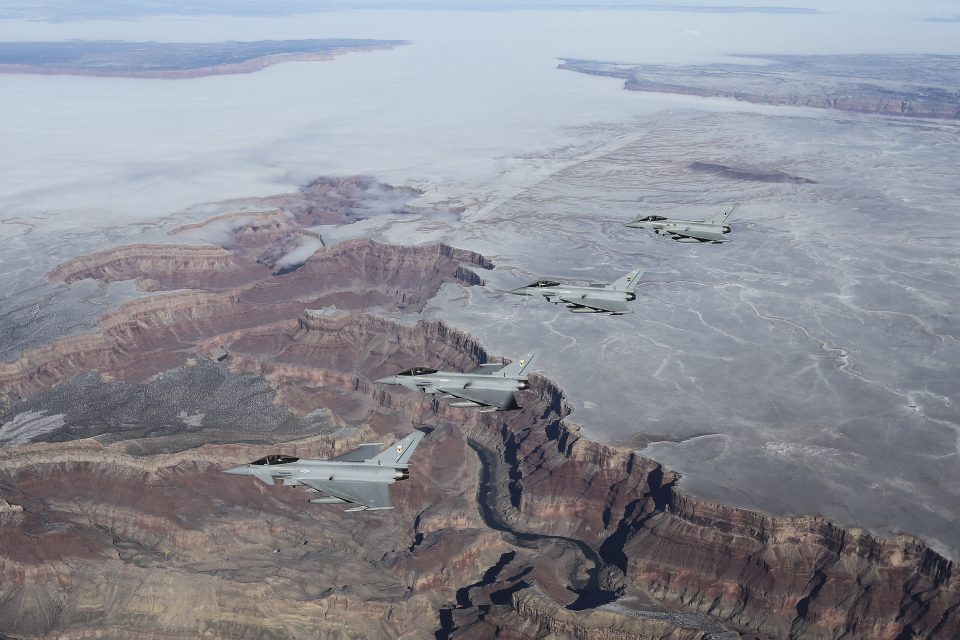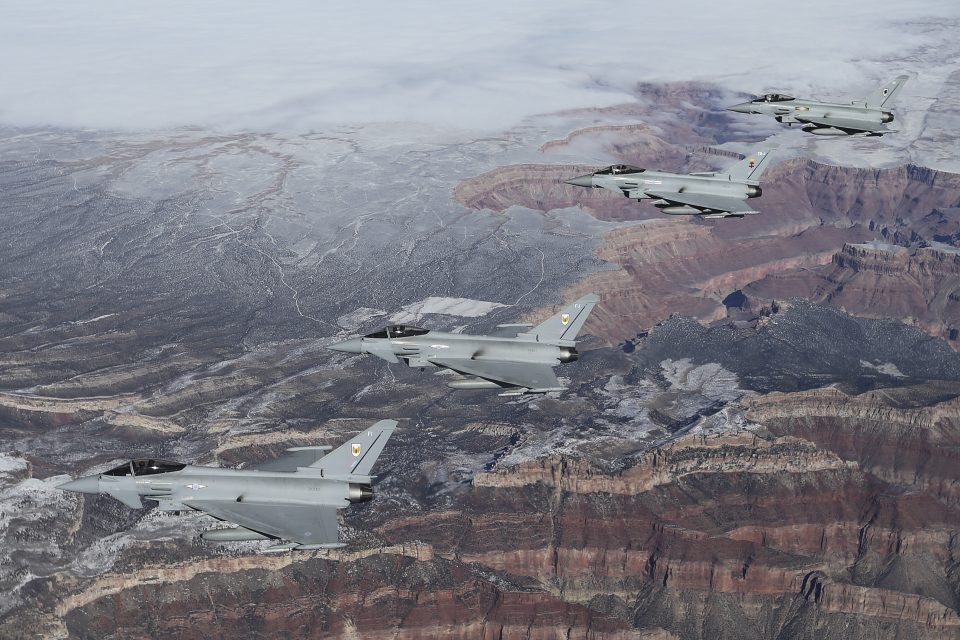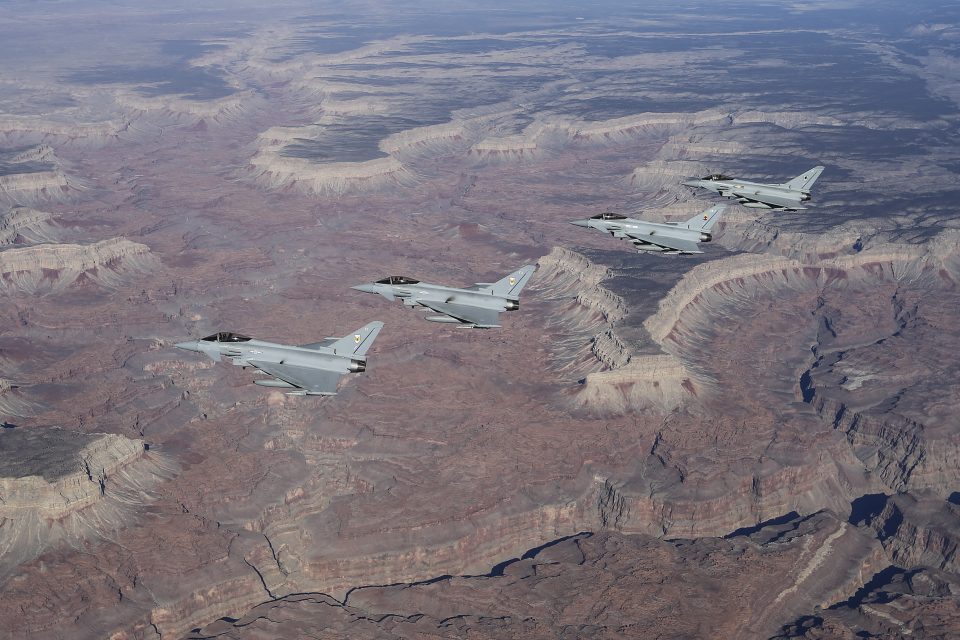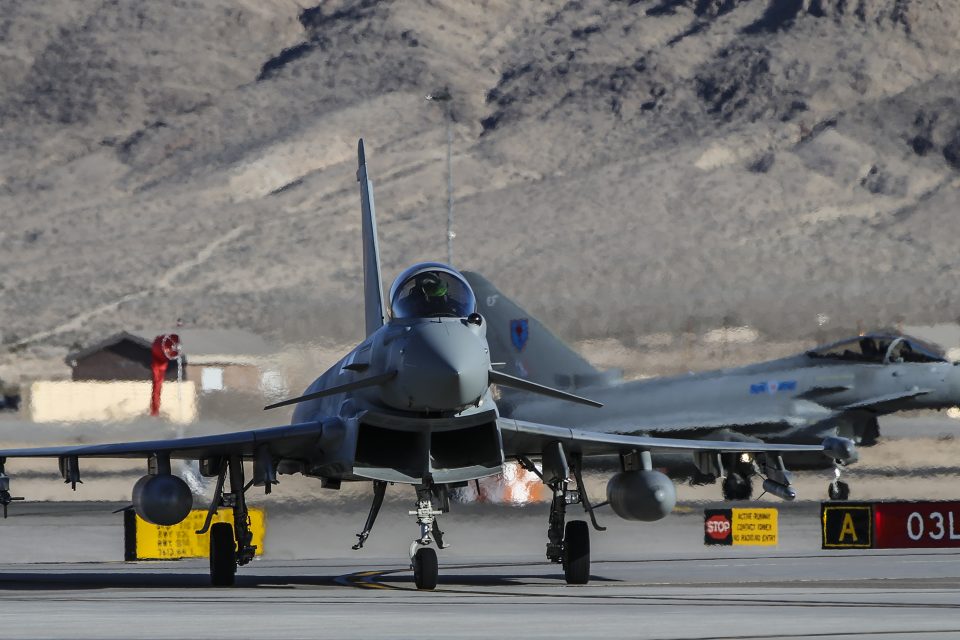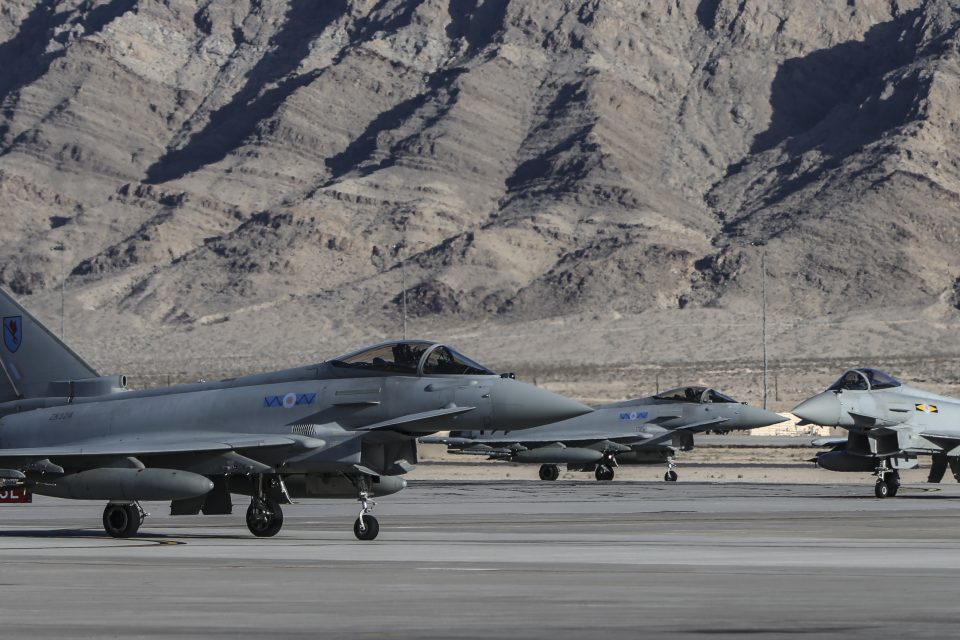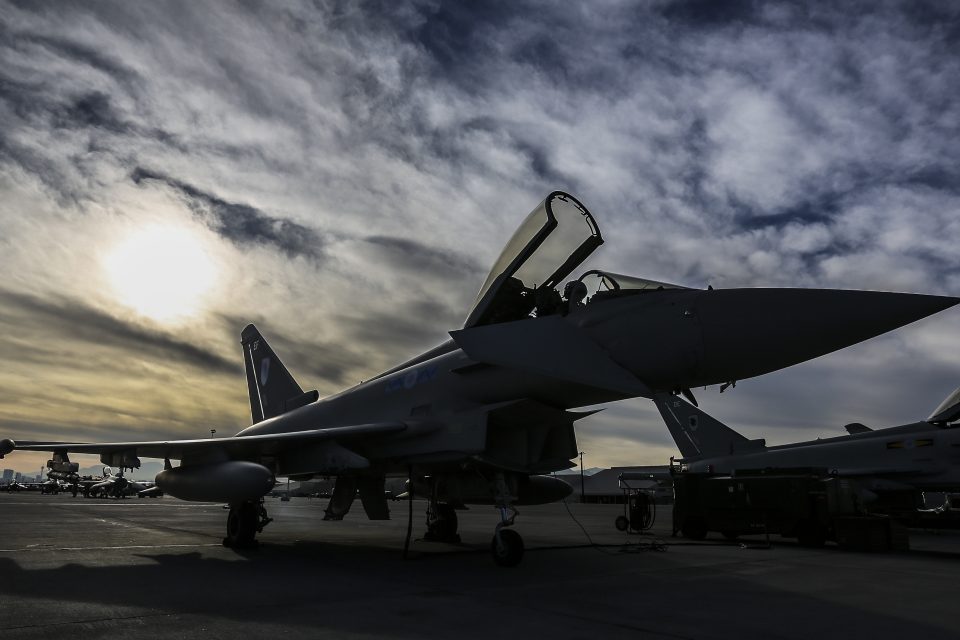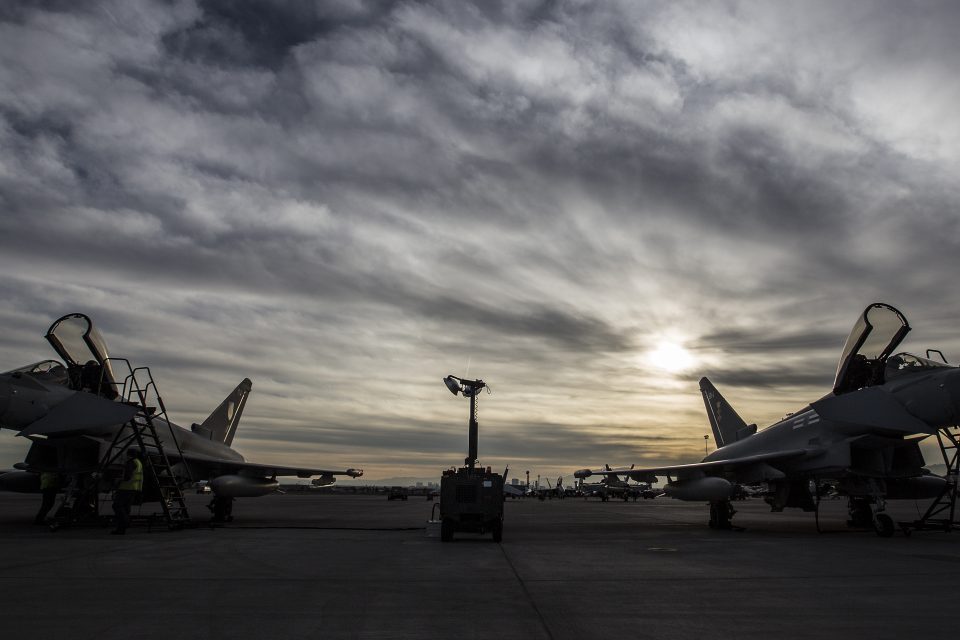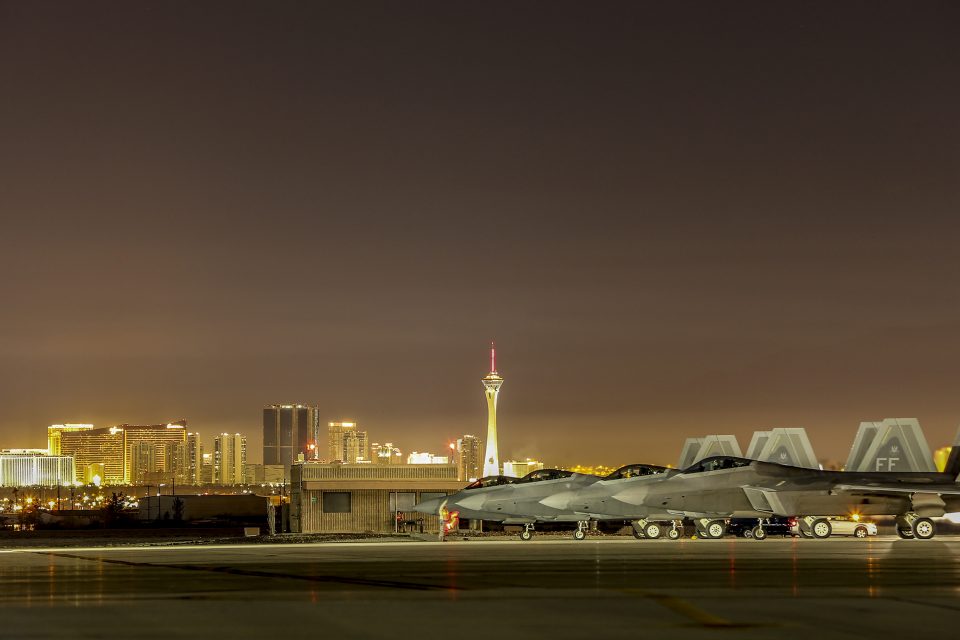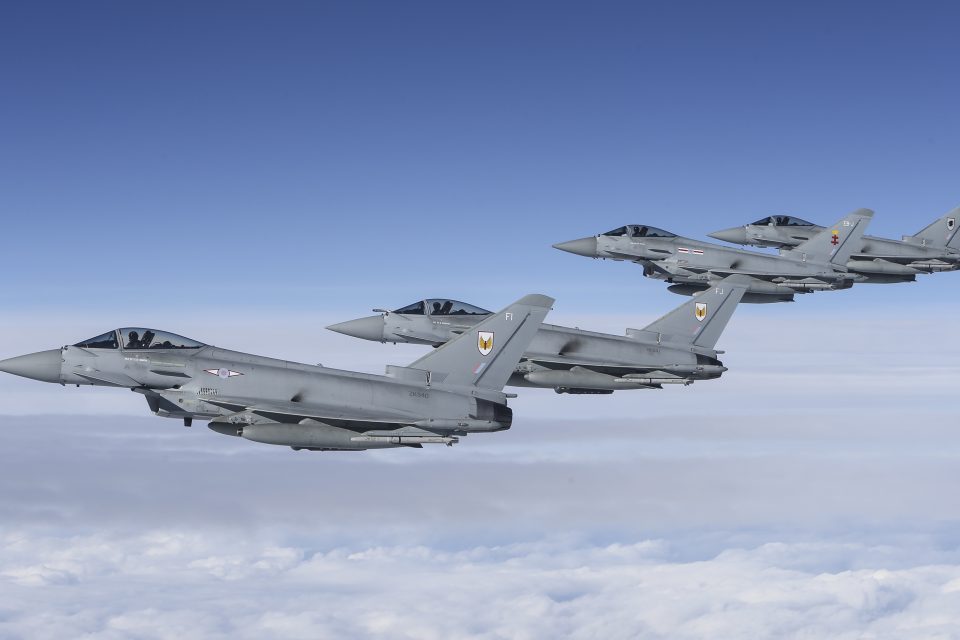2016-04-29 Lossie is a key operating base for Typhoon and Tornado, and as such is supported by aircraft from other bases, notably from Brize-Norton where the lift and tanker fleet is based.
For example, the rapid deployment of the Typhoon from Lossie to the Middle East after the Parliament vote authorizing the RAF participation in the most recent round of conflict in the Middle East, the Typhoons rapidly deployed to Cyprus facilitated by the support fleet, with the A400M taking the required support materiel along with the Typhoons for the forward engagement.
In the slideshow below, A400Ms of the French Air Force are seen at Lossie.
In addition, the RAF version of the Airbus 330MRTT is seen at Lossie in support of the fast jet fleet.
The first photos show the RAF’s Voyager is seen at RAF Lossiemouth, Moray, Elgin.
The Voyager flew into Lossiemouth to take 51 Squadron RAF Regiment down to RAF Brize Norton prior to their deployment to Afghanistan.
The final photo shows the Voyager after it flew into Lossiemouth to take 51 Squadron RAF Regiment down to RAF Brize prior to their deployment to Afghanistan.
According to the RAF:
There are two types of Voyager aircraft: The K Mk2 is a two-point tanker, equipped with 1 FRL Mk32B 900E pod under each wing and the K Mk3, a three-point tanker with an additional centre line hose for larger ‘receiver’ aircraft.
Very few internal changes were required to modify the A330-200 for the Air-to-Air Refuelling role. In particular, no additional fuel tanks are required and, as Voyager shares the same wing as the four-engine A340, there is a pre-strengthened location available for mounting the wing Mk32B pods.
The fuel, necessary for refuelling operations, as well as that required for the aircraft’s mission, is carried within the existing wing and fuselage tanks. This arrangement leaves the cabin free for the transport of up to 291 personnel, and the cargo hold remains available for freight on either military or civil pallets.
On a typical deployment across the Atlantic, a single aircraft would be able to refuel four Tornados and still carry 11,000lb (5000kg) of freight/passengers. Voyager also has a flexible Aeromedical configuration, which includes the ability to carry up to forty stretchers and three critical care patients.
Following an open competition, AirTanker, the civilian contractor, was selected by the MOD to provide the replacement Air-to-Air Refuelling and Air Transport capability through the Future Strategic Tanker Aircraft (FSTA) programme. This is a Private Finance Initiative (PFI) solution, in which the private sector provides not only replacement aircraft, but also a complete and secure long-term service.
While the RAF will continue to retain responsibility for all military tasks involving Voyager, AirTanker will own, manage and maintain the fleet and provide infrastructure, support, training facilities and some personnel. This comprehensive service will ensure that the RAF has full operational availability of the fleet over a 27 year period.
One novel aspect of the AirTanker contract is the facility to lease the aircraft for civil operations. The considerable commercial demand for the aircraft makes it attractive to third-parties who would operate those aircraft from the fleet that are not immediately required for RAF use.
This would deliver a major cost saving to the MOD and taxpayer, and ensures that the considerable capability advantages of Voyager are affordable.
The RAF website also provides details on its evolving A400M fleet as well.
The Royal Air Forcetook delivery of the first Airbus A400M Atlas aircraft during an official ceremony, held at RAF Brize Norton, on 17 November 2014. The arrival of ZM400 heralds the staged delivery of a further 21 aircraft, in a schedule expected to be complete by 2019.
Although the RAF will employ the A400M’s strategic reach and impressive payload capacity by initially operating it in the strategic air transport role, Atlas is primarily a tactical airlifter. Its tactical capabilities will be developed over the next 8 years as it assumes the roles performed by the Lockheed Martin C-130J Hercules prior to the C-130’s planned retirement from RAF service in 2022.
Number LXX Squadron is the first operational Airbus A400M Atlas Squadron. The Squadron stood-up in an administrative and engineering support capacity on 1 October 2014. In September 2015 the Squadron began air transport tasking with its small, but growing cadre of trained aircrew.
Number XXIV Squadron, the Fixed Wing AirMobility Operational Conversion Unit, is responsible for conductingtraining for Atlas aircrew and engineering personnel. AdditionallyNo. 206(R) Squadron conduct test andevaluation as part of the aircraft’s capability development process…..
The aircraft is capable of carrying a load of 25 tonnes over a range of 2000nmls at speeds comparable with pure-jet military transports.
It is capable of operating either at low-level (down to 150ft agl) or at high-level altitudes to 40,000ft, and it is able to deploy troops and/or equipment between and within theatres of operation either by parachute (up to 108 paratroopers), or by landing on short, unprepared or semi-prepared strips. It also offers significant improvements in reliability, maintenance and operating costs over the C-130J Hercules fleet.
The two-pilot flight deck crew will have the benefit of an integrated, digital avionics system in the cockpit and a fly-by-wire control system.
Additional systems will provide a night-vision-compatible glass cockpit complete with two head-up displays supported by at least five multi-function displays that will allow state-of-the-art avionics developments to be incorporated to the flight-deck design, so greatly reducing crew workload.
The aircraft is driven by four Europrop International (EPI) turboprop engines, which will be the most powerful turboprops developed to date in the western world, they will be lighter, easy to maintain and will consume 20% less fuel per mission relative to a similar turbofan engine.
A modern Defensive Aids Suite is fitted, incorporating radio and infra-red frequency detectors, electronic-countermeasure equipment and chaff/flare dispensers.
The cargo bay of the Atlas is controlled by one Air Loadmaster, and can be configured for a number of roles: pure troop carrying, or a mixture of troops and support equipment; palletised cargo or military wheeled and tracked vehicles; two attack helicopters such as the Apache or Puma; or a mixture of light and heavy engineering equipment.
Off-loading equipment or stores after landing can be achieved using conventional ground equipment, the aircraft’s internal load-roller system, by airborne parachute or by gravity extraction from the aircraft’s rear ramp.
The Voyager supported the deployment to a Red Flag exercise, where in the photos below, the Typhoon is seen both on the way (over the Grand Canyon) and operating with the F-22 and other USAF and coalition assets in a high-end air combat training exercise.
The credit for the photos in the three slideshows goes to RAF Lossiemouth and was provided by them.


